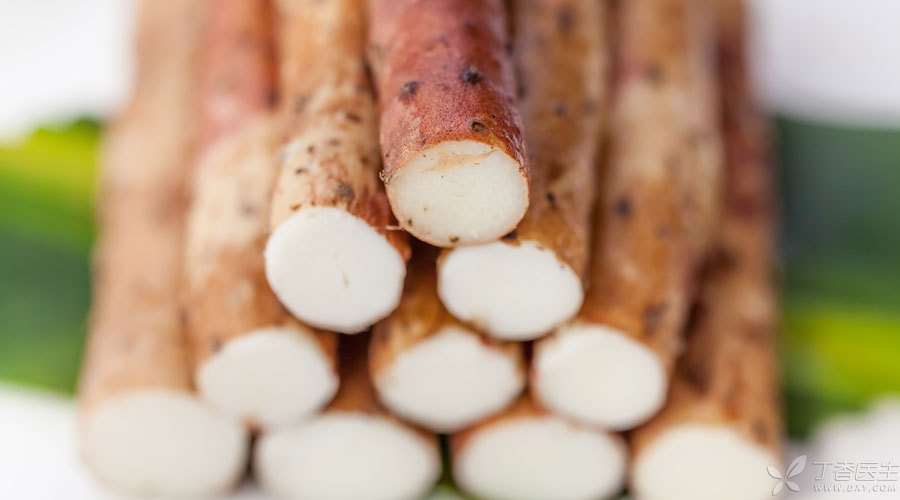
Yam is a common food material, which not only has high nutritional value, but also can present us with changeable taste through different cooking methods.
It can not only stew fresh and fragrant soup, but also boil sweet and soft glutinous porridge, cook crisp and refreshing dishes, and make sweet and delicious shredded yam alone…
However, although yam is delicious, it will also bring us some troubles.
Many people have touched the parts of yam, mainly hands and arms, after cleaning or peeling yam, which are prone to red swelling and itching. In serious cases, erythema and papules may even appear. What is this all about?
Why do your hands itch after cleaning yam?
We will find that yam is rich in mucus. What makes us feel itchy is the saponins in these mucus, which is the [culprit] that makes many people’s skin red, swollen and itchy.
Some people will soon feel uncomfortable such as itchy skin after touching the mucus of yam. Some people may not feel uncomfortable until 3 or 4 days later. Some people’s skin itched for a while and soon returned to normal after cleaning. Some people may have worsening symptoms and even need to see a doctor.
No matter what kind of reaction you belong to, it can only be said that this is life… Even, a person’s reaction is different at different times.
Some people have encountered such situations before: they have been exposed to yam before and there is no uncomfortable place for what. But then, when touching yam once, the skin suddenly appeared red, swollen, itchy and other symptoms. Others have no problem when contacting one kind of yam, but have allergy when contacting another kind of yam.
What other foods are easy to cause skin redness and itching?
In the past, when we mentioned food-related allergies, we often referred to allergic reactions caused by eating food. In fact, conditions such as yam, which can cause skin redness and itching, also need our attention.
1. Fruits, such as mangoes, pineapples, kiwifruits, etc.
Common fruits that may cause some people’s skin to become red, swollen and itchy are mangoes and pineapples. There are also a few people who develop rashes after eating kiwi fruit and apples.
Mango contains monohydroxybenzene, dihydroxybenzene, uronic acid, pineapple contains bromelain, kiwi fruit contains kiwi protease, apple contains salicylic acid and other components, which may make our skin react.
2. Other vegetables, such as taro, tomato, cucumber, etc.
In addition to the common taro, you may not think that other vegetables such as tomatoes and cucumbers have also been reported to cause discomfort to some eaters. The rash is mainly concentrated around the mouth and cheeks.
The causes of skin allergy caused by vegetables and fruits are relatively complex, which may be related to some irritating substances or antigen components contained in food materials.

How to avoid discomfort symptoms caused by yam?
How can we enjoy the delicious yam while avoiding the discomfort risks it brings us?
1. Wear gloves or fresh-keeping bags to contact yam
The safest and simplest way is to wear gloves or fresh-keeping bags to protect yam when handling it. Avoid direct contact with yam with bare hands, which is what we often call “nip in the bud”.
2. Steam, heating and peel that yam
If yam is not required to maintain crisp taste, yam can also be cooked first and then peeled after heating for a period of time, which can also effectively reduce the possibility of allergy caused by contact with yam.
3. If you have touched the mucus of yam and feel uncomfortable, you can wash your hands and bake them on the fire.
Because saponins that cause our discomfort are more afraid of heat, doing so can appropriately relieve the itchy feeling of the skin.
How to reduce allergy caused by fruits and vegetables?
1. Try to avoid touching or eating fruits and vegetables with known allergies.
If you already know what kind of vegetables and fruits you are allergic to, you should try to avoid touching or eating them. If you need contact, you should take precautions in advance, such as wearing gloves.
2. When eating raw fruits and vegetables, choose those fresh and ripe fruits and vegetables.
Wash these fruits and vegetables and cut them into small pieces. Do not touch them directly with your hands, but choose fruit forks or other tools. If there is juice sticking to the skin when eating, wash it off as soon as possible.
3. People who are prone to allergy and children need to pay special attention when eating certain vegetables and fruits for the first time.
Once you feel unwell during eating, you should deal with it in time and seek medical treatment when necessary.
